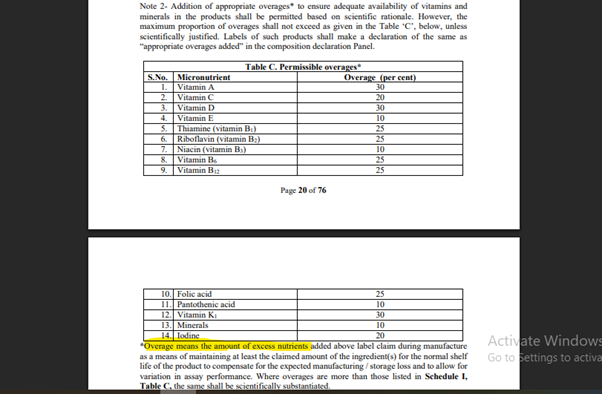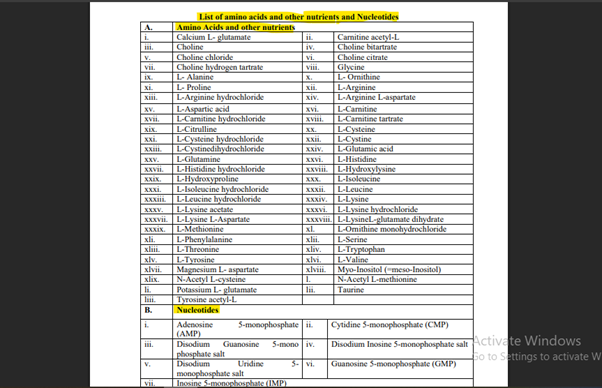Glycemic Index
Q-and-A
Glycemic Index
Glycemic Index
Table of Content
- 1. Is GI a reliable tool for predicting long-term health outcomes?
- 2. Does GI testing accurately reflect how everyone responds to the same food?
- 3. Can GI values be trusted across different food samples or countries?
- 4. Why is GI less relevant in real-world eating situations?
- 5. Are there practical concerns with using GI to label or market foods?
- 6. Does GI align with holistic dietary guidelines?
- 7. Should GI testing be used as the sole measure of carbohydrate quality?
- 8. What should companies or researchers consider instead of GI-only testing?
1. Is GI a reliable tool for predicting long-term health outcomes?
GI’s ability to predict long-term health outcomes is limited. Studies such as that of Reynolds et al. (2019) have shown that it has weak associations with diseases like heart disease and diabetes. Jenkins et al. (2021) added that more recent research has reported results that are not consistent across populations making it unreliable when treated alone as an indicator of health.
Source: Reynolds et al. (2019), Jenkins et al. (2021)
2. Does GI testing accurately reflect how everyone responds to the same food?
Nope. It has been established that humans are not the same: according to research by Zeevi et al. (2015), responses to identical foods may differ between fivefold individuals. Individual responses to carbohydrates are influenced by genetics, lifestyle, and gut microbiota, making GI values inappropriate for predicting responses in different individuals.
Sources: Zeevi et al. (2015)
3. Can GI values be trusted across different food samples or countries?
GI values between country and food sample (Jalilpiran et al., (2022) are affected by factors such as food variety, growing conditions, and preparation processes. Minor deviations in cooking or preparation from one country to another can show GI variances, which lead to the inconsistency of GI in terms of cross-study or international comparability.
Sources: Jalilpiran et al., (2022)
4. Why is GI less relevant in real-world eating situations?
Isolated tests are usually conducted in GI, (ISO 26642:2010) where 50g of available carbohydrate should be consumed preferably on an empty stomach; this scenario, however, does not correlate to the standard meal setting. A meal might be prepared using combinations of foods, condiments, and various other techniques. This in turn will alter the blood glucose response, therefore making GI less suitable for normal dietary applications.
Sources: ISO 26642:2010, Singh A, et al. (2022).

5. Are there practical concerns with using GI to label or market foods?
Conceptually, though beets have a high GI, their carbohydrate content per serving is low. For an individual to hit 50g of carbohydrate for a GI test, he would have to eat an impractically large number of beets, so GI becomes a bit of a convenient number for marketing.
Sources: Jenkins et al. (2021), Jalilpiran et al., (2022)

GI is a fallacious argument concerning food, considering only carbohydrates and neglecting other food components like fatty acids, proteins, and fibers. Dietary guidelines ought to define foods in terms of their actual quality and pattern, which is not a successful goal of GI.
The GIs system is not perfect and using GIs alone is insufficient to characterize carbohydrates for their quality. A composite review must also account for fiber content, food matrix, micronutrient profile, and satiety effects, as cited by the Academy of Nutrition and Dietetics.
Sources: Foster-Powell K, et al. (2013).
In addition to the above-mentioned kinds of carbohydrate quality measures, companies and researchers should include:
- Postprandial glucose and insulin testing in mixed meals
- Satiety and appetite assays
- Nutrient profiling, such as Fiber: carbohydrate ratios
- Analysis of food matrix and structural integrity
- Cultural and geographical appropriateness in testing models
Such efforts would offer a more holistic, multi-dimensional as well as a better, evidence-based understanding regarding the health effect of a food.
Comparing the limitations and considerations of Glycaemic Index (GI) testing
Aspect | GI Testing | Real-World Considerations | Alternative Methods |
Predicting Long-Term Health | Limited, low correlation with diseases | Inconsistent results across populations | Post-prandial glucose, insulin testing |
Individual Variability | No, large differences in responses | Personal factors influence blood glucose | Personalized testing for everyone |
International Consistency | Not reliable across countries or food samples | Food prep, growing conditions vary | Multi-dimensional food analysis-e.g., fiber ratio |
Relevance in Real-World | Tested in isolation, not real meals | Real meals involve other foods and combinations | Consider full meal context and food matrix |
Practicality in Marketing | Misleading due to serving size inconsistencies | Foods may not reach 50g test standard | Nutrient profiling and food structure analysis |
Holistic Dietary Guidelines | Narrow focus on carbohydrates | Ignores fats, proteins, and fiber | Comprehensive dietary quality assessments |
Conclusion
It should be noted that Glycaemic Index (GI) testing has been inadequate in providing information on long-term health consequences, or even on the quality of food; considerable individual variation and the limitations in the real world now make it clear that a more holistic approach needs to be taken by the researcher and health practitioner alike. This should include elements such as postprandial glycaemic responses and satiation measures with nutrient profiling, relating to some dietary factors, being included before having a thorough understanding of a food’s health outcome.
Get in touch with our experts today

Let’s create something Innovative and Delicious together
Food Research Lab strives for excellence in new Food, Beverage and Nutraceutical Product Research and Development by offering cutting edge scientific analysis and expertise.




